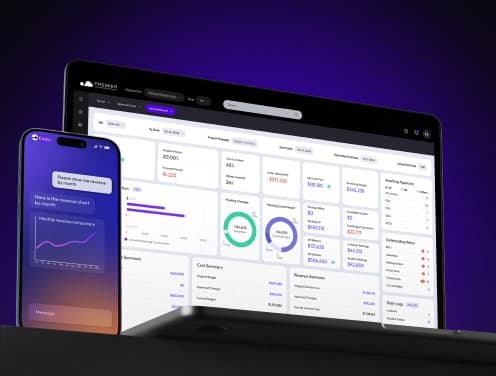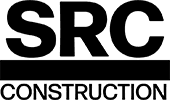
What Is The Purpose Of The Construction Management Plans?
Excellence in any construction project relies significantly on robust construction management plans. These blueprints outline every step, choice, and resource leading to the project's completion. They provide a comprehensive roadmap for the tasks before, during, and after construction, ensuring smooth operation throughout. Created by industry leaders with vast experience, these plans are the DNA of a successful construction project.
Our construction management plans ERP software seamlessly integrates various aspects of construction business management. Premier Construction Software offers an optimal blend of financial management, job costing, project management, and mobile functions. This investment in software revolutionizes your workflow, providing an integrated platform designed to elevate the efficiency and decision-making prowess of your projects.
Outline Project Objectives for Clear Guidance Throughout Construction
The initial step of any construction project is to set clear goals. These objectives guide everyone involved, providing a clear direction on what needs to be achieved. Whether it’s building a new housing complex or renovating an existing structure, a well-defined aim is the starting point. This clarity helps in making informed decisions, from material selection to final execution.
Defining these goals also enables better risk management. Knowing the project's objectives helps identify potential challenges early on. Teams can then develop strategies to tackle these issues, minimizing delays and cost overruns. This proactive approach is vital for maintaining project timelines and budgets.
Establish Safety Protocols to Protect Workers and the Public
Safety is a top priority in construction projects. Establishing robust safety protocols protects workers and the public from potential hazards. Construction sites are inherently risky, with numerous opportunities for accidents. A committed focus on safety reduces these risks, ensuring a safer working environment.
Safety protocols begin with comprehensive training for all team members. This training covers everything from the correct use of equipment to how to respond in an emergency. It ensures everyone on site knows how to work safely, minimizing the risk of accidents.
Implementing these protocols also involves regular safety audits. These inspections identify potential hazards, from unstable structures to faulty equipment. Once identified, teams can address these risks, making the necessary changes to improve safety.
Define Resource Allocation for Optimal Use of Materials and Labor
Resource allocation is a vital aspect of construction management plans. It involves deciding where and when to deploy resources such as materials, tools, and labor. Effective resource allocation ensures that all aspects of a construction project receive the necessary support.
A significant step in resource allocation is inventory management. It requires a detailed understanding of what materials are available, where they are, and how they can be used most efficiently. A well-managed inventory helps avoid wastage and delays due to lack of materials.
With labor, resource allocation is about assigning the right people to the right tasks. This process involves evaluating each worker's skills and experiences and matching them with the tasks where they can be most effective. By doing so, construction firms can maximize productivity and improve project outcomes.
Effective resource allocation also involves scheduling. Knowing when a certain resource will be needed and ensuring it's available at the right time can prevent project delays. Accurate scheduling helps to keep the workflow smooth and maintain the project's momentum.
Create Communication Strategies for Stakeholders and Team Members
Communication plays an essential role in construction management plans. Without effective communication, even the best-laid plans can struggle to succeed. A clear communication strategy ensures all stakeholders, from team members to clients, are in the loop.
Regular project updates keep everyone informed. These updates can share progress reports, flag potential issues, and celebrate successes. By maintaining transparency, construction companies can foster trust and collaborative relationships with stakeholders.
Effective communication also involves listening. It's crucial to create channels for feedback and suggestions from team members. This interactive communication not only enhances engagement but also allows for valuable input that can shape project decisions.
For communication to succeed, clarity is key. Construction terminology can be confusing for those outside the industry. Ensuring clear, jargon-free communication can make a significant difference, especially when dealing with clients or non-technical stakeholders.
The use of technology can also improve communication. Tools like project management software provide a centralized communication hub. All project-related communications can be kept in one place, allowing for easy reference and keeping everyone on the same page.
Detail Environmental Controls for Sustainability and Compliance
Implementing environmental controls is crucial for sustainable construction practices and regulatory compliance. These measures protect the environment and ensure projects do not harm the surrounding ecosystem. An important first step is assessing environmental impact. Before work begins, teams should evaluate how construction activities might affect local wildlife, water quality, and air pollution levels. This assessment can guide the development of strategies to minimize negative impacts.
Waste management is a key component of environmental controls. Construction projects generate a significant amount of waste, from unused materials to demolition debris. By establishing protocols for waste reduction, recycling, and disposal, companies can lessen their environmental footprint. Reducing waste not only benefits the environment but can also lead to cost savings.
Another vital aspect of environmental controls is soil and water conservation. Proper measures, such as silt fences and stormwater management systems, prevent soil erosion and protect water sources from contamination. These actions safeguard local habitats and help maintain biodiversity on and around construction sites.
Air quality management is also essential. Construction activities, particularly those involving demolition or the use of heavy machinery, can release pollutants into the air. Implementing dust control measures and minimizing emissions from construction vehicles contributes to cleaner air and ensures the health and safety of workers and the public.
Compliance with environmental regulations requires continuous monitoring and adaptation. Environmental laws and standards can change, so construction companies need to stay informed and adjust their practices as needed. By committing to environmental controls, companies not only meet legal requirements but also contribute to a more sustainable future.
Forecast Project Timelines to Ensure On-Schedule Delivery
Accurate forecasting of project timelines is key to ensuring on-schedule delivery. This process involves estimating how long each phase of the project will take and planning accordingly. Creating a detailed project schedule at the outset provides a roadmap for completion and helps identify potential bottlenecks.
One method to improve timeline accuracy is through the use of historical data. Analyzing past projects with similar scopes can provide valuable insights into realistic timeframes. This historical perspective helps in setting more accurate deadlines and expectations for current projects.
Incorporating buffer times into the project timeline is a practical approach to managing unexpected delays. Unexpected issues such as bad weather or supply chain disruptions can impact project progress. By planning for these contingencies, companies can minimize their impact on the overall schedule.
Regular progress checks are essential for maintaining the project timeline. These checks allow managers to compare actual progress against the planned schedule and make necessary adjustments. If a project is falling behind, corrective action can be taken to bring it back on track.
Effective communication with stakeholders about the timeline is crucial. Keeping clients and team members informed about schedule changes and the reasons behind them helps manage expectations and maintains trust. Transparent communication ensures that everyone is aligned with the project's timeline and objectives.
By forecasting project timelines accurately and maintaining flexibility, construction companies can increase their chances of delivering projects on schedule. This not only enhances their reputation but also leads to greater client satisfaction and the potential for future business opportunities.
Coordinate Tasks Among Various Contractors for Synchronized Efforts
Successful construction projects often involve a range of contractors, each bringing their unique skills and expertise. This wide participation can present a challenge in synchronizing efforts. A construction management plan addresses these challenges, detailing a coordination strategy.
First, it's crucial to define clear roles and responsibilities. This clarity ensures that everyone knows what their tasks are, reducing overlaps and gaps in work. Clearly defined roles also foster accountability, encouraging each team to deliver their best work.
Efficient scheduling plays a big part in coordination. Knowing when each contractor will be needed and planning for it keeps the project moving smoothly. It also prevents situations where different contractors need to work in the same space at the same time.
Conflict resolution is another aspect of task coordination. With multiple contractors involved, disagreements are bound to occur. Having a predetermined process for resolving these issues can prevent project delays, fostering positive working relationships among teams.
Open and consistent communication is crucial for task coordination. Regular team meetings and project updates ensure everyone has access to the same information, facilitating alignment and coordination. Making use of project management software can also streamline communication and task tracking.
Coordination isn't a one-time thing. It requires ongoing effort, monitoring, and adjustments throughout the project. By giving task coordination the attention it deserves, managers can optimize each contractor's input, resulting in high-quality, efficient work.
Set Quality Standards to Achieve the Desired End Result
Quality standards are a crucial component of construction management plans. These standards guide the work at every stage of the project to ensure the result meets the desired specifications. The first step is to define these standards. What standards are critical for each aspect of the work, and how can they be measured?
Once defined, these standards must be communicated to everyone involved. Contractors need to be aware of the benchmarks they're working towards. Employees must understand how their tasks contribute to overall quality. Communication of standards sets clear expectations and gives everyone a goal to work towards.
Regular inspections are key to maintaining quality standards. These checks provide an opportunity to spot deviations early on and implement corrections. Inspections can also identify processes or methods that need improvement, driving continuous refinement of work practices.
Feedback is a valuable tool for maintaining quality. On-site teams are often the first to recognize challenges or propose improvements. Creating an environment that encourages feedback can contribute significantly to the quality of the final project.
Quality continues with project completion. Post-project reviews provide valuable insights into what worked well and areas for improvement. These reviews can be used to refine quality standards for future projects, contributing to a culture of continuous improvement.
Quality standards should not be seen as a restrictive checklist but as a set of guidelines ensuring the best possible outcome. By setting clear and realistic quality benchmarks, construction companies can consistently deliver high-quality projects that satisfy clients and strengthen their market standing.
Manage Risk by Identifying Potential Issues Early On
Risk management is critical for the smooth execution of construction projects. Anticipating potential issues and addressing them proactively can ward off costly delays and errors. Identifying risks starts with thorough planning and a keen understanding of the project scope. An in-depth review of project plans and specifications helps spot potential problems before the ground is broken.
Engage experts during the planning phase. Specialists in different areas can help predict specific risks, from structural challenges to potential supply chain disruptions. This expertise often results in precise risk assessments, enabling better preparedness.
Risk comes from many directions - safety, financial, legal, or environmental. Thus, risk assessments consider diverse scenarios. For instance, safety audits at the site level identify hazards that could lead to injuries, while financial risk assessments can highlight budget concerns.
Regularly updating risk assessments based on ongoing work and changes remains paramount. Project managers should adjust their strategies according to new circumstances, staying ready to mitigate emerging risks. This agility in risk management ensures that issues are managed as they develop.
To manage risk effectively, communication with all parties should be transparent, highlighting potential risks to timelines, budgets, and compliance requirements. This transparency ensures that all stakeholders can contribute to risk mitigation strategies.
Document Compliance with Regulations and Building Codes
Documentation of compliance is non-negotiable in construction. Strict adherence to regulations and building codes is necessary not only for legalities but also for ensuring safety and quality. The initial steps involve a complete review of all relevant laws and codes. Being conversant with these requirements sets the stage for full compliance.
With an understanding of regulations, project managers can create checklists and protocols. These tools serve as constant reminders and guides, ensuring that no regulatory detail is overlooked. Regular training sessions for the workforce reinforce these requirements, keeping compliance top of mind.
On-site inspections are a practical means of documenting compliance. These should be conducted by qualified professionals who can verify that construction practices match up to codes. Inspectors' reports form part of the compliance records, providing evidence of due diligence.
Technology aids in the process with compliance tracking software. Such tools organize and manage documentation efficiently, ensuring that nothing gets lost in the shuffle. Digital records also simplify submissions to regulatory agencies, providing transparency and traceability.
An essential part of the documentation is tracking changes to regulations. Laws and codes can evolve, and it’s imperative for construction management to incorporate these changes into their compliance strategies. Regular updates to protocols and training can help maintain compliance despite a changing regulatory environment.
Facilitate Decision Making with Structured Processes
Decision-making in construction can be challenging, given the scale and complexity of projects. Structured processes can significantly streamline these decisions. Reliable information lays the foundation for informed decision-making. Construction management should ensure access to updated, relevant data.
Then comes the process of defining decision points. Managers should determine when and what decisions are required, considering project requirements and potential roadblocks. This forward-thinking approach allows teams more time to consider implications and options.
Creating a decision matrix simplifies choice. By quantifying and ranking factors like cost, time, and quality impact, matrices can aid in comparing options objectively. This process can eliminate bias and ensures managers choose the best path based on objective rather than subjective factors.
Serve as a Reference Point for Project Expectations
Construction management plans serve as a reference point for all involved parties. From start to finish, they outline what's expected in terms of tasks, timelines, and outcomes. Clear goals set early on align everyone's efforts toward the desired result
Project expectations go beyond work assignments and deadlines. They include communication standards, quality guidelines, safety rules, and more. For employees, understanding these expectations can increase engagement and motivation. For contractors, these guidelines provide a benchmark for their work.
Iteration and evolution of expectations occur as work progresses. Keeping the plan updated with changes ensures it maintains its relevance as a reference point. Change documentation helps manage project scope and prevents misalignment of expectations.
Beyond serving internal purposes, a clear management plan communicates expectations to stakeholders outside the construction team. This transparency can build trust, manage client expectations, and preclude miscommunication.
Driving Project Success with Online Construction Project Management Software
Our online Construction Project Management Software brings command to your fingertips. Providing a comprehensive overview of projects on the go promotes quicker decision-making and reduces errors. From the allocation of tasks to the management of resources and deadlines, everything is under your command, anytime, anywhere.
Partner with Premier Construction Software and unveil a new definition of project success. Your next step is a call away.





















